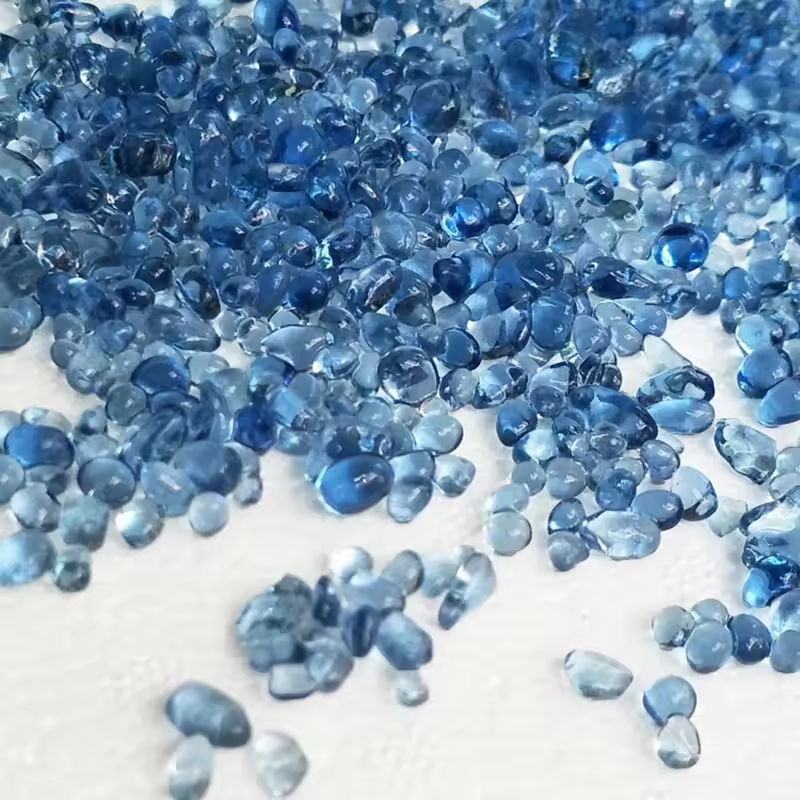The Basics of Sand Composition
Nature gifts us countless wonders, and sand is one of them. Examining sand under a microscope unlocks a hidden world of beauty and complexity. Let’s delve into the primary components that make up this common yet fascinating material.

Types of Minerals Found in Sand
When we look at sand under a microscope, we see a mosaic of minerals. Each grain is a window to the earth’s crust. Common minerals in sand include quartz, feldspar, and mica. Quartz, hard and clear, is a champion of durability. Feldspar brings a range of colors from pink to green, depending on its type. Mica shines with a delicate, flaky structure. These minerals give sand a diversity that amazes scientists and enthusiasts alike. By understanding the types of minerals in sand, we grasp a fraction of our planet’s mineral riches.
Geological Formation of Sand
Sand is born from the slow yet relentless forces of nature. Mountains erode into rivers and rivers grind rock into fine particles. Over millions of years, these particles settle and form sand. The process is complex, involving weathering, erosion, and deposition. Each grain tells a story of ancient seas, volcanic eruptions, or glacier movements. By studying sand’s geological formation, researchers can read chapters of our planet’s dynamic biography. Sand under a microscope does not just reveal beauty; it uncovers the earth’s history written in tiny grains.
 Microscopic Analysis of Sand Grains
Microscopic Analysis of Sand Grains
To explore the minute details of sand, we need to get up close. This is where microscopic analysis comes into play.
The Equipment Used in Microscopic Analysis
Various tools aid us in magnifying the tiny grains of sand. A microscope is the primary device. In the world of sand microscopy, stereo microscopes work best. They offer a three-dimensional view. This allows for a more detailed analysis of sand grain morphology.
Other essential tools include slides, cover slips, and tweezers. For advanced studies, researchers might use a polarizing microscope. This reveals the crystalline structure and optical properties of sand grains.
The Process of Preparing Sand Samples
Preparing sand samples for microscopic examination is a careful process. First, we gather a small sample of sand using tweezers. We then sprinkle this onto a slide. A single layer is ideal for observation. Next, we place a cover slip on top to hold the grains in place.
Upon securing the sand between the slide and cover slip, we place it under the microscope. We adjust the focus and magnification to observe the finer details. The colors, shapes, and sizes of the grains become clear. Sand under a microscope turns into a landscape of wonder, unveiling a world of hidden details.
The Diversity of Sand Under the Microscope
When we explore sand under microscope, a stunning variety of forms and colors appear. Different locations contribute unique characteristics to their local sands. This diversity is a product of geological processes and mineral composition.
Variations of Sand from Different Locations
Sand from each place on Earth tells a unique tale. On tropical beaches, sand may contain crushed coral or shells, giving it a white, powdery appearance. Desert dunes often showcase a sea of red or orange, thanks to the presence of iron oxide. Volcanic regions contribute black, glassy grains to the sand mix. The composition of these sands under a microscope may reveal their exotic origins. Explorers and scientists use these details to map the sand’s journey from mountain to shore.
Biological Components in Sand
Apart from inorganic minerals, sand also houses organic materials. Microscopic examination may reveal bits of shell, coral, or even microorganisms. Over time, these biological components break down, adding to the sand’s complexity. In some sands, you might find fragments of sea life that are millions of years old. These tiny fossils help unravel the biological history of the region. Observing sand under a microscope isn’t just about rocks and minerals—it’s also about life that once thrived in oceans and lakes.
 The Science Behind Sand’s Unique Patterns
The Science Behind Sand’s Unique Patterns
Diving deeper into the world of grains, the uniqueness of sand comes alive under magnification. Every scoop of sand contains a story written in its patterns. Let’s uncover how these natural designs form and what they tell us.
The Role of Magnification in Revealing Sand Patterns
A microscope turns simple grains into a gallery of fine art. It showcases the sand’s patterns, unseen by the naked eye. With magnification, the natural order within the chaos of countless grains emerges. The lines, ridges, and sometimes symmetrical formations surface. We owe these views to the precision of powerful lenses. These lenses can magnify tiny sand grains up to 300 times or more. At these levels, each grain’s unique journey reflects through scratches, pits, and contours.
Understanding the Color Spectrum of Sand Grains
Sand under microscope is a burst of colors. Each hue has a story, tied to minerals and their origins. Pale grains might bear quartz, composed mainly of silicon and oxygen. Darker sands might owe their shade to basalt or volcanic glass. Red and orange specks hint at the presence of iron compounds. Greens and blues suggest mineral olivines, which might point to ancient volcanic activity. Even organic elements contribute to the color spectrum. Broken shell fragments add white or light tones while decomposed plant material might add darker shades. Each color plays a part in the sand’s visual symphony under a microscope’s scrutiny.
Environmental and Geological Significance
The study of sand under a microscope uncovers more than just its microscopic beauty. It holds clues to the environmental and geological narratives of the Earth. By scrutinizing the tiny grains, we can derive significant insights about the past and present conditions of our planet.
Ways in Which Sand Reflects Environmental Conditions
Examining sand reveals the environmental conditions of its origin. The size and shape of sand grains, viewed under a microscope, can indicate the energy of their environment. For example, rounded grains often signal a history of long transportation by water or wind, smoothing their edges. Sharp edges can denote a recent break from a larger rock, typical of a more turbulent and youthful geological setting. Furthermore, the presence of certain minerals may suggest the climate of the area—iron oxides may indicate a wet, oxidizing environment, while a high concentration of quartz might point to an arid region.
Sand as an Indicator of Geological History
Sand also acts as a historical recorder, preserving details of the Earth’s geological history. Each layer of sand can signify a different geological era—buried strata reveal ancient mountain formations, sea level changes, or desert expansions. By analyzing the mineral composition and grain stratification, geologists can deduce the environments and processes that produced the sand. Through this, they can reconstruct past landscapes, identifying periods of erosion, sedimentation, and even cataclysmic events like volcanic eruptions or meteorite impacts. Sand under a microscope, thus, becomes a powerful tool for piecing together the planet’s extensive and dynamic history.
 Practical Applications of Studying Sand Microscopically
Practical Applications of Studying Sand Microscopically
The microscopic study of sand spans beyond academic interest and beauty. It has real-world applications that impact various fields.
Forensic Science and Sand Analysis
In forensic science, sand can act as crucial evidence. When detectives analyze sand under a microscope, they can trace its origin. This can link suspects to crime scenes. Sand’s unique blend of minerals and textures varies widely by location. These features can match samples from suspects’ clothes, shoes, or vehicles to specific places. Forensic geologists study these sand traits to support law enforcement.
Educational Value in Earth Science
The wonder of sand under microscope also enhances education. In earth science classes, teachers use sand to show natural processes. They explain rock formation, erosion, and sedimentation. Students gain a hands-on understanding of the earth’s crust. By studying sand grains, they can explore a wide range of geological concepts. This ignites curiosity and encourages further learning in geology and environmental science.
 Technological Advancements in Sand Microscopy
Technological Advancements in Sand Microscopy
The world of sand microscopy is ever-evolving, with new technologies enhancing our view into this tiny landscape. These advancements allow us to see sand under microscope with greater detail and clarity.
Innovations in Microscopic Imaging Techniques
Recent breakthroughs in imaging have revolutionized sand microscopy. Here are key innovations:
- High-Resolution Imagery: Modern microscopes now have high-resolution capabilities. They capture the smallest details of sand grains.
- 3D Imaging: Some microscopes produce 3D images of sand grains. This lets us view their shape from all angles.
- Digital Microscopy: Convert sand images into digital files with ease. These can be shared and analyzed on computers worldwide.
- Automated Image Analysis: Software now analyzes the images for us. It picks out patterns and characteristics swiftly and accurately.
- Portable Microscopes: Compact and powerful microscopes are now available. Researchers bring them to the field, studying sand on-site.
These innovations in microscopic imaging help delve deeper into the sands’ secrets. They open up new realms in science, not just for its beauty, but for the stories and evidence each grain holds.